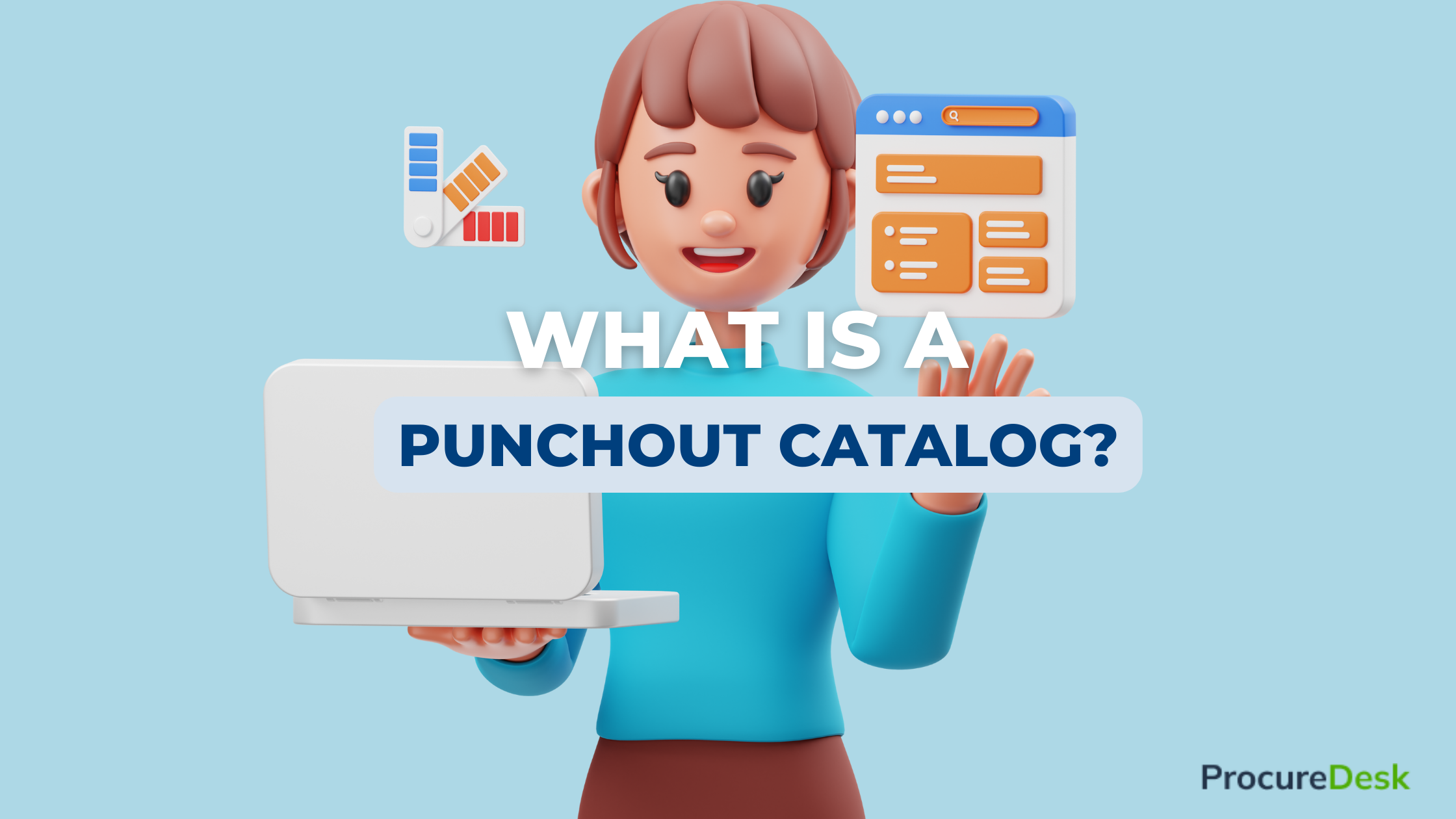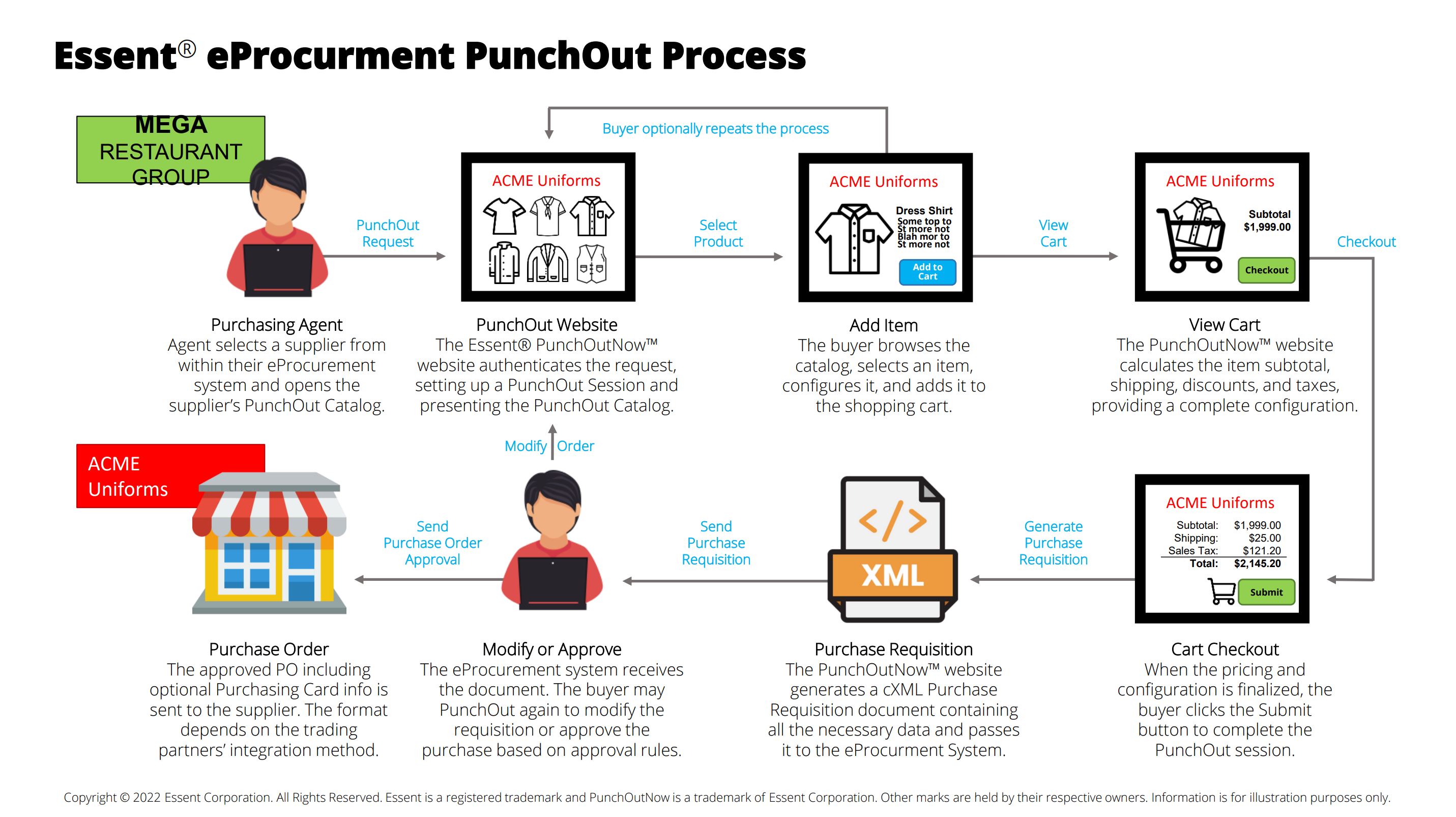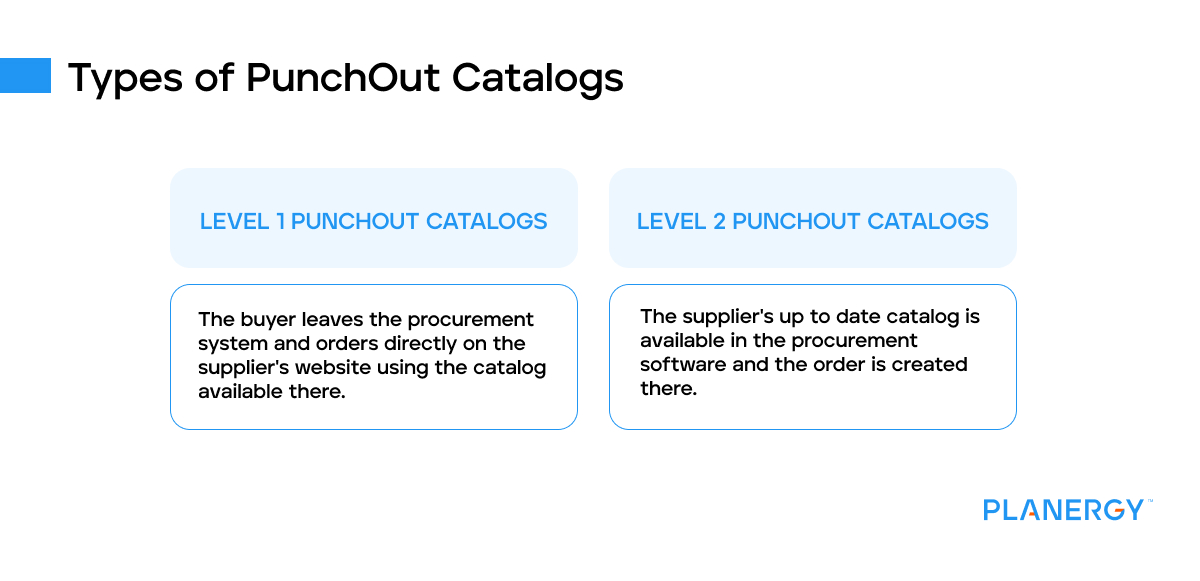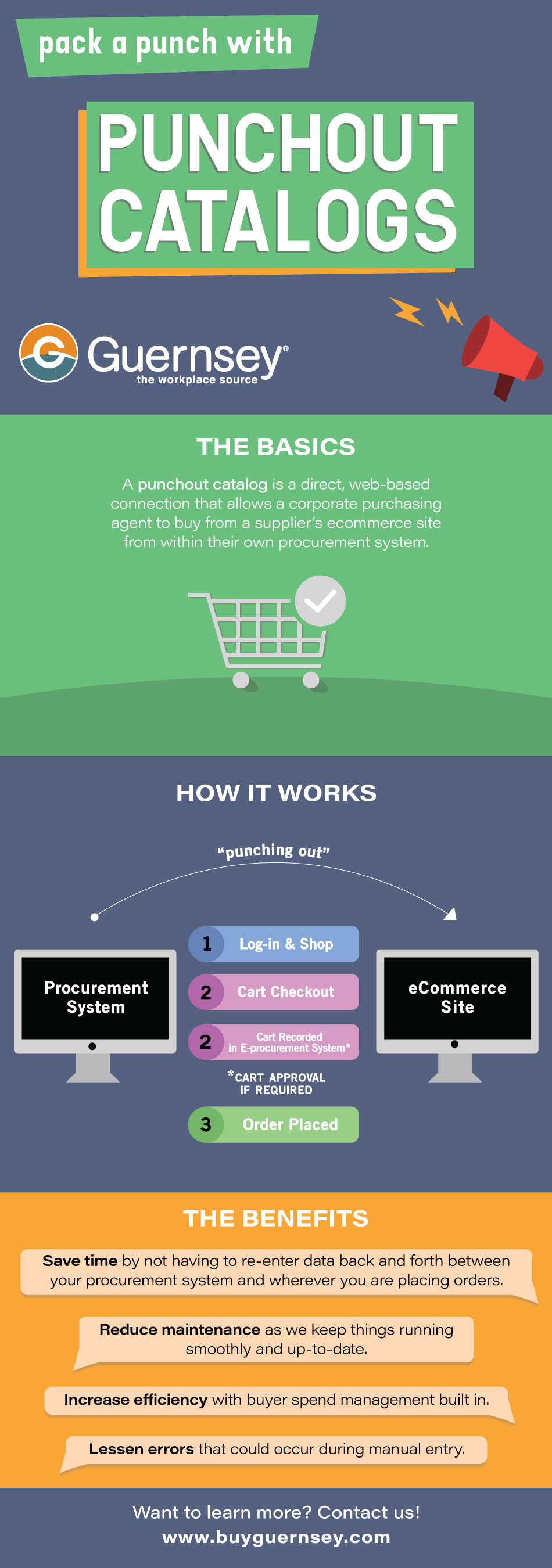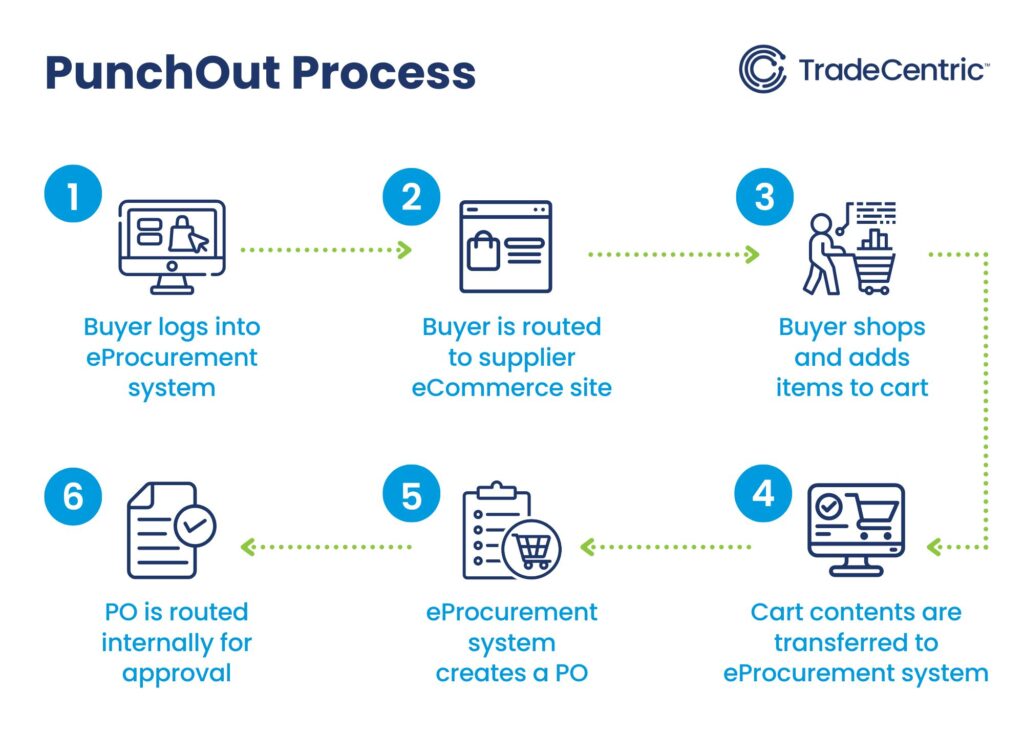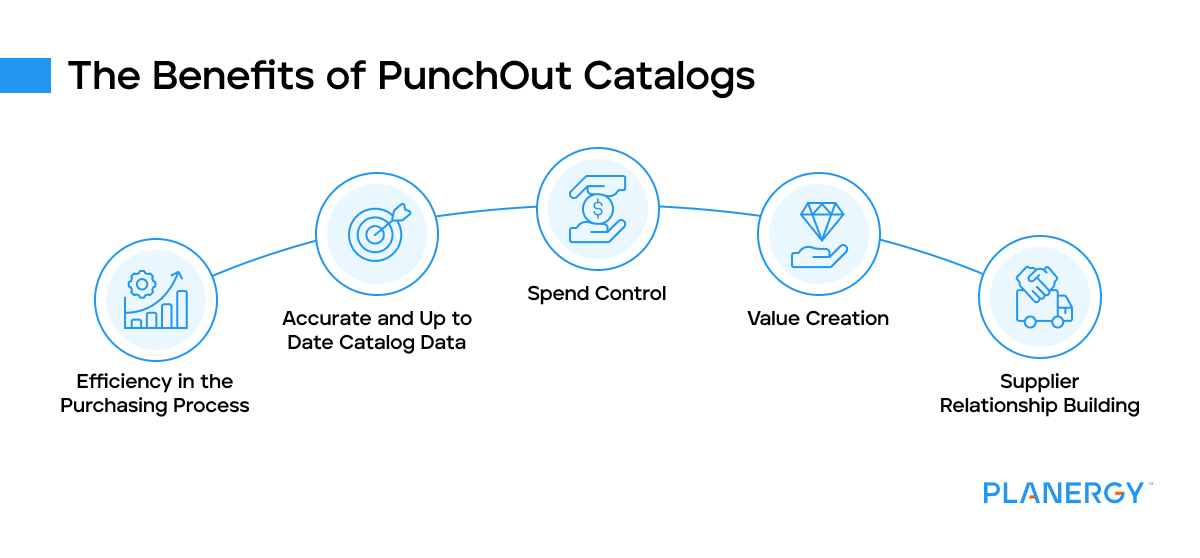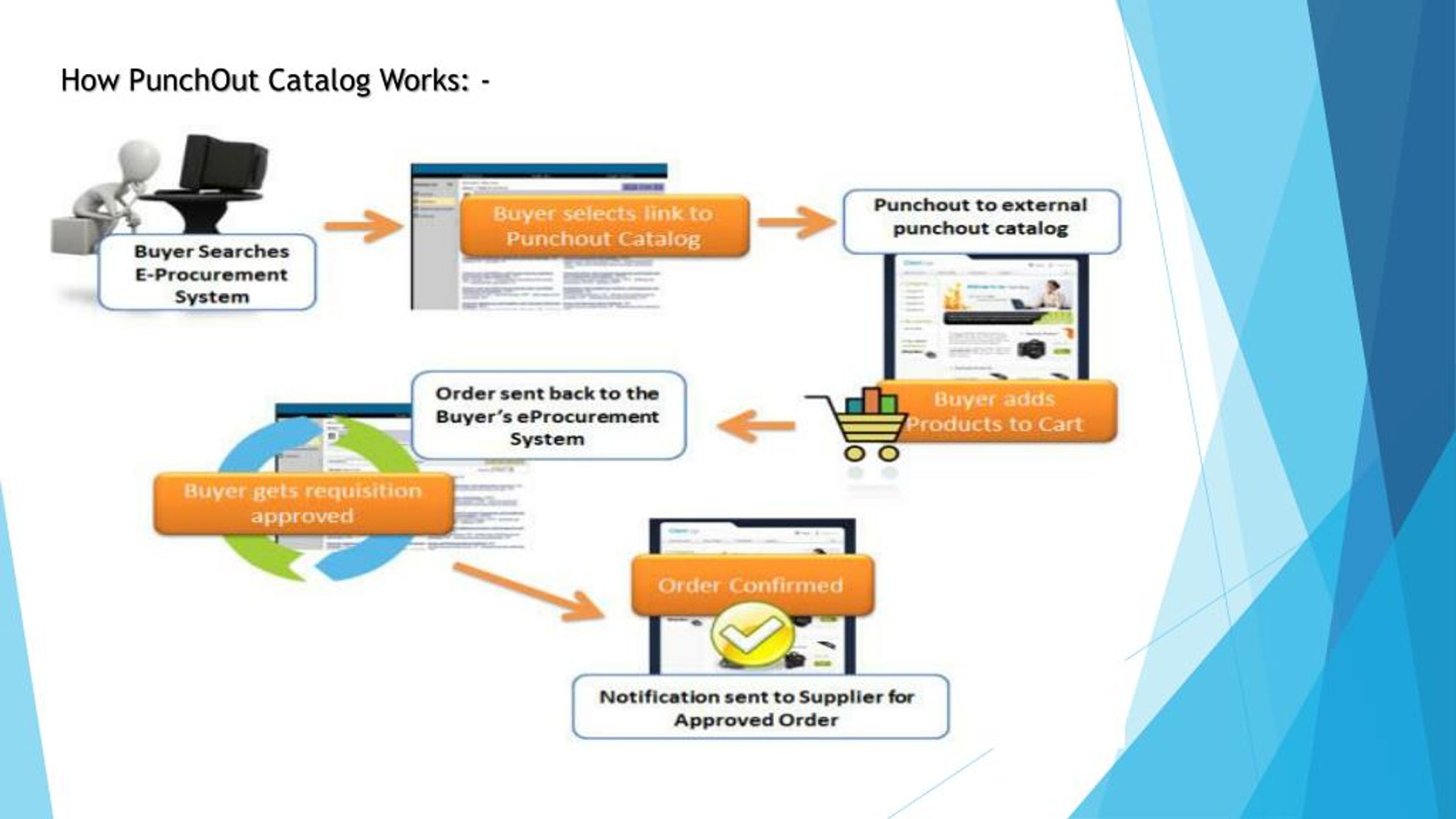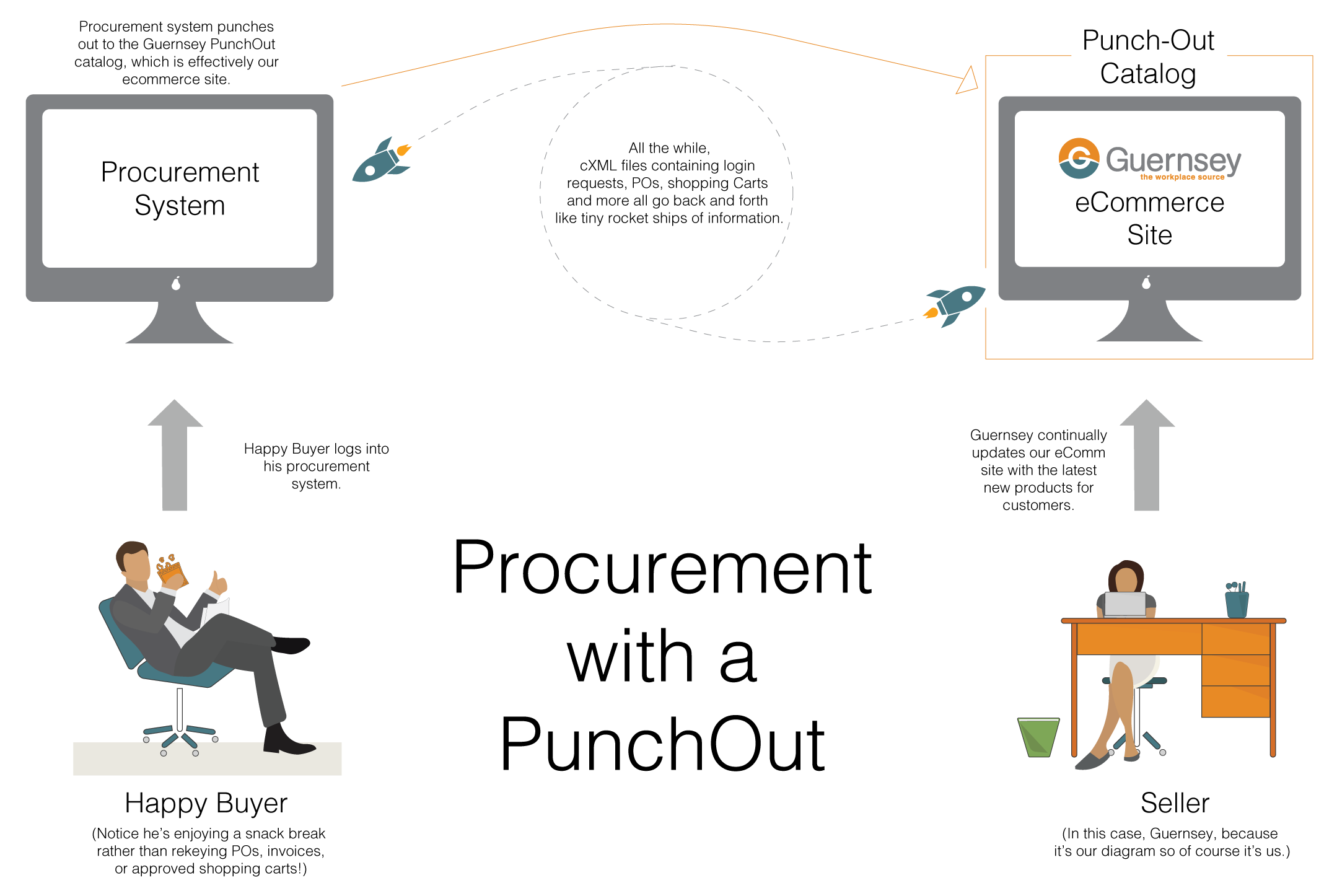What Is Punchout Catalog
What Is Punchout Catalog - Punchout catalogs are digital portals that allow your customers to access your product offerings directly from their procurement software or enterprise resource planning (erp) system. Punchout is a technology that connects a buyer’s eprocurement application (used to purchase goods and services) directly to their suppliers’ ecommerce sites. What is a punchout catalog? A punchout catalog is an online b2b ecommerce site that a buyer can access from their own procurement system.punchout catalogs connect eprocurement solutions to ecommerce systems, enabling b2b companies to streamline the shopping process by automating authentication and cart order transfer between buyer. What is a punchout catalog? What is a punchout catalog? A punchout catalog is an eprocurement tool that enables a corporate buyer to purchase items directly from a supplier’s website. They provide a way for buyers to access a specific vendor’s catalog. What is a punchout catalog? Punch out catalogs (more commonly spelled as punchout catalogs) are a powerful ecommerce technology. Punchout catalogs provide a wide array of advantages over paper or cif catalogs, including: Punch out catalogs (more commonly spelled as punchout catalogs) are a powerful ecommerce technology. A punchout catalog is an eprocurement tool that enables a corporate buyer to purchase items directly from a supplier’s website. What is a punchout catalog? The more your customers make personal. They provide a way for buyers to access a specific vendor’s catalog. What is a punchout catalog? What is a punchout catalog? A punchout catalog is an online b2b ecommerce site that a buyer can access from their own procurement system.punchout catalogs connect eprocurement solutions to ecommerce systems, enabling b2b companies to streamline the shopping process by automating authentication and cart order transfer between buyer. Punchout is a technology that connects a buyer’s eprocurement application (used to purchase goods and services) directly to their suppliers’ ecommerce sites. A punchout catalog is an online b2b ecommerce site that a buyer can access from their own procurement system.punchout catalogs connect eprocurement solutions to ecommerce systems, enabling b2b companies to streamline the shopping process by automating authentication and cart order transfer between buyer. A punchout catalog describes a form of catalog procurement in the b2b sector. What is a punchout. Punchout is a technology that connects a buyer’s eprocurement application (used to purchase goods and services) directly to their suppliers’ ecommerce sites. What is a punchout catalog? Punch out catalogs (more commonly spelled as punchout catalogs) are a powerful ecommerce technology. What is a punchout catalog? Punchout catalogs provide a wide array of advantages over paper or cif catalogs, including: Here, the buyer can access the supplier's online store via their. What is a punchout catalog? Punchout is a technology that connects a buyer’s eprocurement application (used to purchase goods and services) directly to their suppliers’ ecommerce sites. Punch out catalogs (more commonly spelled as punchout catalogs) are a powerful ecommerce technology. A punchout catalog is an eprocurement tool that. What is a punchout catalog? Here, the buyer can access the supplier's online store via their. A punchout catalog is an online b2b ecommerce site that a buyer can access from their own procurement system.punchout catalogs connect eprocurement solutions to ecommerce systems, enabling b2b companies to streamline the shopping process by automating authentication and cart order transfer between buyer. A. What is a punchout catalog? What is a punchout catalog? What is a punchout catalog? Punchout is a technology that connects a buyer’s eprocurement application (used to purchase goods and services) directly to their suppliers’ ecommerce sites. Punch out catalogs (more commonly spelled as punchout catalogs) are a powerful ecommerce technology. The more your customers make personal. What is a punchout catalog? Punchout is a technology that connects a buyer’s eprocurement application (used to purchase goods and services) directly to their suppliers’ ecommerce sites. Punch out catalogs (more commonly spelled as punchout catalogs) are a powerful ecommerce technology. Here, the buyer can access the supplier's online store via their. A punchout catalog is an eprocurement tool that enables a corporate buyer to purchase items directly from a supplier’s website. What is a punchout catalog? They provide a way for buyers to access a specific vendor’s catalog. What is a punchout catalog? A punchout catalog is an electronic catalog that enables buyers to access a supplier’s website directly from their. What is a punchout catalog? They provide a way for buyers to access a specific vendor’s catalog. A punchout catalog describes a form of catalog procurement in the b2b sector. Punchout catalogs provide a wide array of advantages over paper or cif catalogs, including: What is a punchout catalog? Here, the buyer can access the supplier's online store via their. A punchout catalog is an eprocurement tool that enables a corporate buyer to purchase items directly from a supplier’s website. Punchout catalogs provide a wide array of advantages over paper or cif catalogs, including: Punchout catalogs are digital portals that allow your customers to access your product offerings directly. Here, the buyer can access the supplier's online store via their. Punch out catalogs (more commonly spelled as punchout catalogs) are a powerful ecommerce technology. A punchout catalog is an electronic catalog that enables buyers to access a supplier’s website directly from their procurement system. A punchout catalog is an online b2b ecommerce site that a buyer can access from. What is a punchout catalog? A punchout catalog is an eprocurement tool that enables a corporate buyer to purchase items directly from a supplier’s website. A punchout catalog is an electronic catalog that enables buyers to access a supplier’s website directly from their procurement system. A punchout catalog describes a form of catalog procurement in the b2b sector. What is a punchout catalog? Punch out catalogs (more commonly spelled as punchout catalogs) are a powerful ecommerce technology. Here, the buyer can access the supplier's online store via their. The more your customers make personal. Punchout is a technology that connects a buyer’s eprocurement application (used to purchase goods and services) directly to their suppliers’ ecommerce sites. A punchout catalog is an online b2b ecommerce site that a buyer can access from their own procurement system.punchout catalogs connect eprocurement solutions to ecommerce systems, enabling b2b companies to streamline the shopping process by automating authentication and cart order transfer between buyer. They provide a way for buyers to access a specific vendor’s catalog. Punchout catalogs are digital portals that allow your customers to access your product offerings directly from their procurement software or enterprise resource planning (erp) system.The Power of Punchout Catalogs Revolutionizing Procurement ProcureDesk
What is a PunchOut Catalog?
Everything You Need To Know About PunchOut Catalogs Planergy Software
An Overview of Oracle PeopleSoft PunchOut Catalog for Resellers VAR
What is a Punchout Catalog and How Do They Work?
How Does A Punchout Catalog Work at Valeria Sturm blog
PunchOut Catalog What It Is and How It Works TradeCentric
Everything You Need To Know About PunchOut Catalogs Planergy Software
PPT 6 Reasons you Should Support PunchOut Catalog PowerPoint
PunchOut Catalog What It Is And How It Works TradeCentric, 41 OFF
What Is A Punchout Catalog?
Punchout Catalogs Provide A Wide Array Of Advantages Over Paper Or Cif Catalogs, Including:
What Is A Punchout Catalog?
Related Post:
